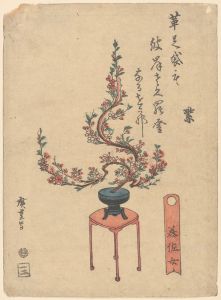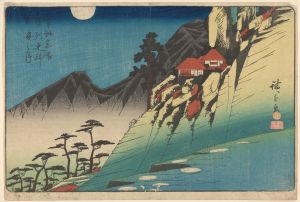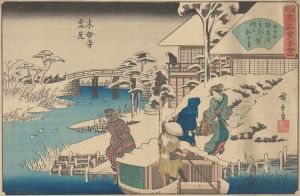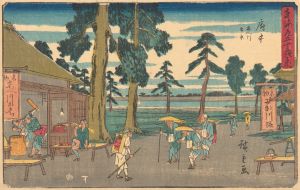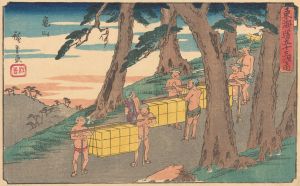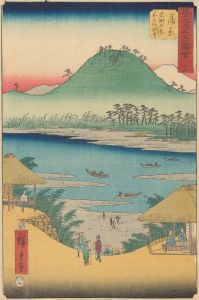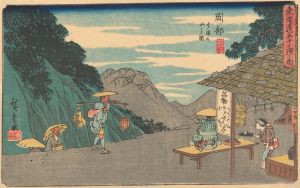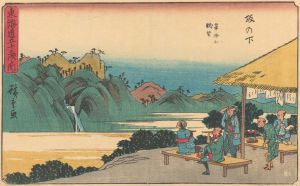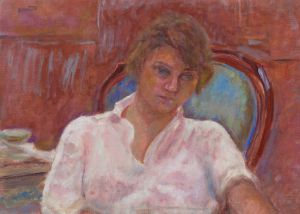
Ishibe
A hand-painted replica of Andō Hiroshige’s masterpiece Ishibe, meticulously crafted by professional artists to capture the true essence of the original. Each piece is created with museum-quality canvas and rare mineral pigments, carefully painted by experienced artists with delicate brushstrokes and rich, layered colors to perfectly recreate the texture of the original artwork. Unlike machine-printed reproductions, this hand-painted version brings the painting to life, infused with the artist’s emotions and skill in every stroke. Whether for personal collection or home decoration, it instantly elevates the artistic atmosphere of any space.
Andō Hiroshige, one of the most renowned ukiyo-e artists of the Edo period in Japan, created the artwork "Ishibe" as part of his celebrated series The Fifty-three Stations of the Tōkaidō (Tōkaidō Gojūsan-tsugi). This series, first published in the 1830s, depicts the 53 post stations along the Tōkaidō road, a vital route connecting Edo (modern-day Tokyo) to Kyoto. The Tōkaidō was one of the five major highways established during the Tokugawa shogunate and was frequently traveled by merchants, officials, and pilgrims.
"Ishibe" represents the 52nd station on the Tōkaidō road, located in present-day Shiga Prefecture. The print captures a quiet and serene moment, characteristic of Hiroshige's ability to convey both the natural beauty and the human activity of the locations he depicted. In this particular work, the scene shows travelers resting at a tea house, a common sight along the Tōkaidō where weary journeyers could pause for refreshment. The composition emphasizes the simplicity and tranquility of rural life, with soft, muted colors and a balanced arrangement of figures and landscape elements.
Hiroshige's The Fifty-three Stations of the Tōkaidō series was highly influential in both Japan and abroad. It not only provided a visual record of the famous road but also offered a glimpse into the daily lives and customs of the Edo period. The series was created using the woodblock printing technique, which allowed for the production of multiple copies, making it accessible to a wide audience. Hiroshige's innovative use of perspective, color, and composition in this series contributed to his reputation as a master of landscape art.
"Ishibe" and the other prints in the series reflect Hiroshige's keen observation of nature and human activity, as well as his ability to evoke a sense of place. The series remains a significant cultural artifact, offering insights into the geography, travel, and artistic practices of 19th-century Japan.








